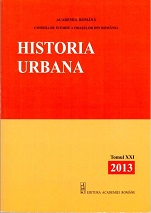Căile ferate şi planificarea urbană în Bucureşti (1869–1919)
Railways and Urban Planning in Bucharest (1869–1919)
Author(s): Toader PopescuSubject(s): History
Published by: Editura Academiei Române
Keywords: modernisation; Bucharest; railways; planning; station; public works; Sfinţescu;
Summary/Abstract: The final decades of the 19th century and the beginning of the 20th century are the “heroic age” of railroad construction in Romania. At the end of this interval, most of the current rail network had already been built. The development of the cities included in this network was heavily influenced by the presence of railway infrastructure and by its associated opportunities and restrictions. Railway and municipal administrations had to deal with this complex interaction without the benefit of a specific doctrine or the support of previous similar practical experiences. This paper follows the articulation between urban and railway planning in the case of the city of Bucharest, the most complex and compelling example for the particular situation of pre-World War I Romania. It focuses both on the specific planning discourse and practices, following the evolution of the relation between the main involved stakeholders (the central railway administration and Bucharest municipality) and of their relative importance. Their particular (convergent or divergent) visions of development will also be compared, identifying and emphasising the topics that were subject to conflict or negotiation.
Journal: Historia Urbana
- Issue Year: XXI/2013
- Issue No: 21
- Page Range: 271-290
- Page Count: 20
- Language: Romanian
- Content File-PDF

